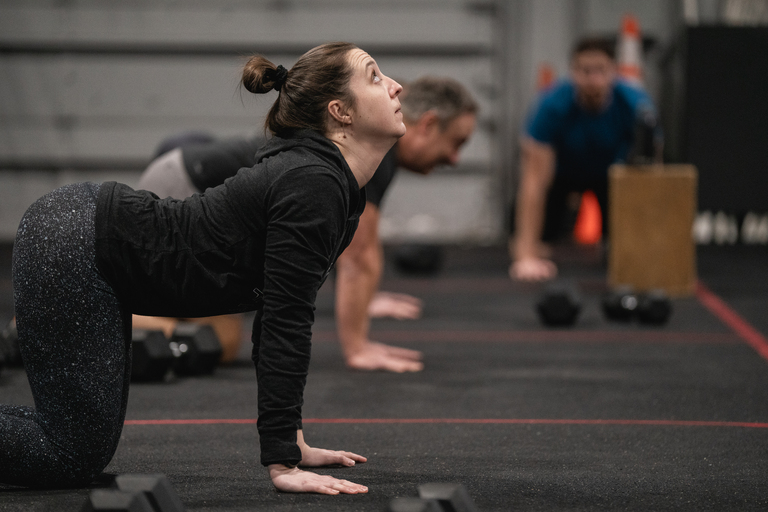
In the hustle and bustle of modern life, it’s easy to overlook the importance of mobility in maintaining overall health and well-being. Whether you’re a busy professional, a dedicated parent, or both, finding time to prioritize mobility exercises amidst your packed schedule can seem daunting. However, the benefits far outweigh the effort, especially when it comes to improving your quality of life. At Xtra Mile Fitness, where you already dedicate time to your workouts, integrating mobility exercises into your routine can further elevate your fitness journey and enhance your overall health.
Why Mobility Matters:
Mobility refers to the ability of your joints and muscles to move freely through their full range of motion. It plays a crucial role in everyday activities, from bending down to tie your shoes to lifting groceries or playing sports. Unfortunately, our sedentary lifestyles, prolonged sitting, and repetitive movements can lead to stiffness, muscle imbalances, and reduced flexibility over time.
The consequences of poor mobility extend beyond physical discomfort; they can also impact your performance in the gym, increase the risk of injuries, and hinder your overall quality of life. However, incorporating targeted mobility exercises into your routine can help counteract these effects, improve your posture, enhance your movement patterns, and unlock your body’s full potential.
Hip Flexor Stretch:
Sitting for extended periods, whether at a desk or in front of a screen, can cause tightness in the hip flexors—a group of muscles located at the front of your hips. Tight hip flexors can lead to postural issues, lower back pain, and decreased mobility in the hips. The following hip flexor stretch is a simple yet effective way to alleviate tightness and improve flexibility:
- Kneeling Hip Flexor Stretch:
- Begin in a kneeling position with one knee on the ground and the other foot planted flat on the floor in front of you, creating a 90-degree angle with your knee.
- Engage your core and shift your weight forward slightly, maintaining an upright posture.
- Gently lean into the stretch, feeling a comfortable stretch in the front of your hip.
- Hold for 20-30 seconds, breathing deeply and focusing on relaxing into the stretch.
- Switch sides and repeat.
Guidelines:
- Perform the hip flexor stretch after your workouts or as part of your daily routine.
- Aim for 2-3 sets on each side, holding the stretch for 20-30 seconds per set.
- Avoid bouncing or jerking movements, and ease into the stretch gradually to prevent strain.
- Listen to your body; the stretch should be mildly uncomfortable but not painful. If you feel any sharp or intense pain, stop immediately.
Shoulder Dislocations:
In today’s digital age, where we spend countless hours hunched over smartphones and computers, maintaining optimal shoulder mobility is crucial for preventing stiffness and discomfort. Shoulder dislocations are a versatile exercise that targets multiple muscles surrounding the shoulder joint, promoting flexibility and improving range of motion. Here’s how to perform them safely and effectively:
- Shoulder Dislocations (Pass Throughs) with a Resistance Band or PVC Pipe:
- Stand with your feet shoulder-width apart and hold a resistance band with a wide grip, palms facing down.
- Begin with the band in front of your thighs, arms straight, and hands slightly wider than shoulder-width apart.
- Keeping your arms straight, slowly raise the band overhead in a smooth, controlled motion until it touches your lower back.
- Reverse the movement, lowering the band back to the starting position in front of your thighs.
- Repeat for 8-10 repetitions, focusing on maintaining tension in the band throughout the movement.
Guidelines:
- Perform shoulder dislocations as part of your warm-up routine before upper body workouts or as a standalone mobility exercise.
- Use a resistance band that allows you to maintain proper form and control throughout the movement. Adjust the tension as needed.
- Start with a wider grip on the band and gradually narrow it over time as your shoulder mobility improves.
- Avoid arching your lower back or shrugging your shoulders during the exercise. Keep your core engaged and maintain good posture throughout.
Incorporating Mobility into Your Routine:
Now that you’re equipped with two essential mobility exercises, it’s time to integrate them into your daily routine. Consistency is key to reaping the benefits, so aim to perform these drills at least 3-4 times per week. Whether you do them after your workouts, during breaks at work, or as part of your morning routine, find a time that works best for you and stick to it.
Remember, improving your mobility isn’t a quick fix—it’s a journey that requires patience, dedication, and ongoing effort. As you progress, you’ll notice improvements not only in your physical performance but also in your overall quality of life. So, take the extra mile for your body, and let mobility be the cornerstone of your journey to better health and well-being.
